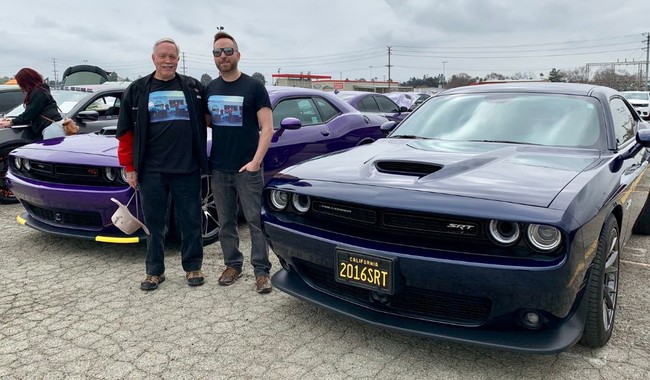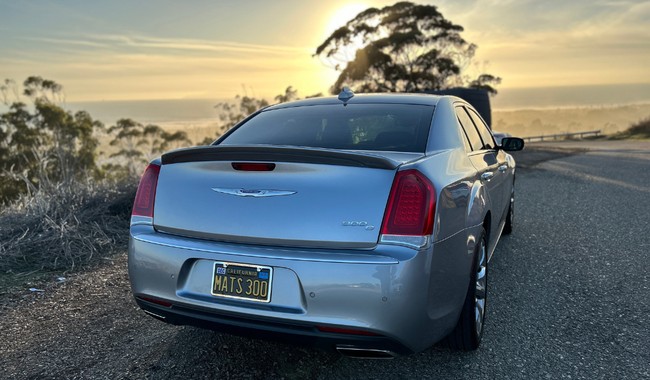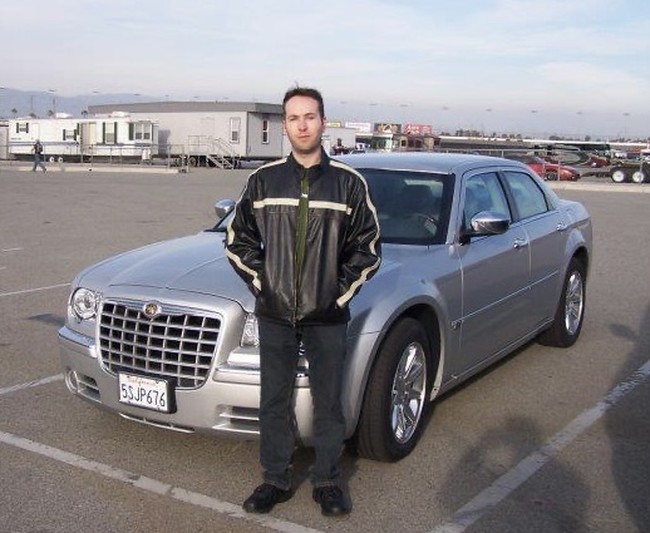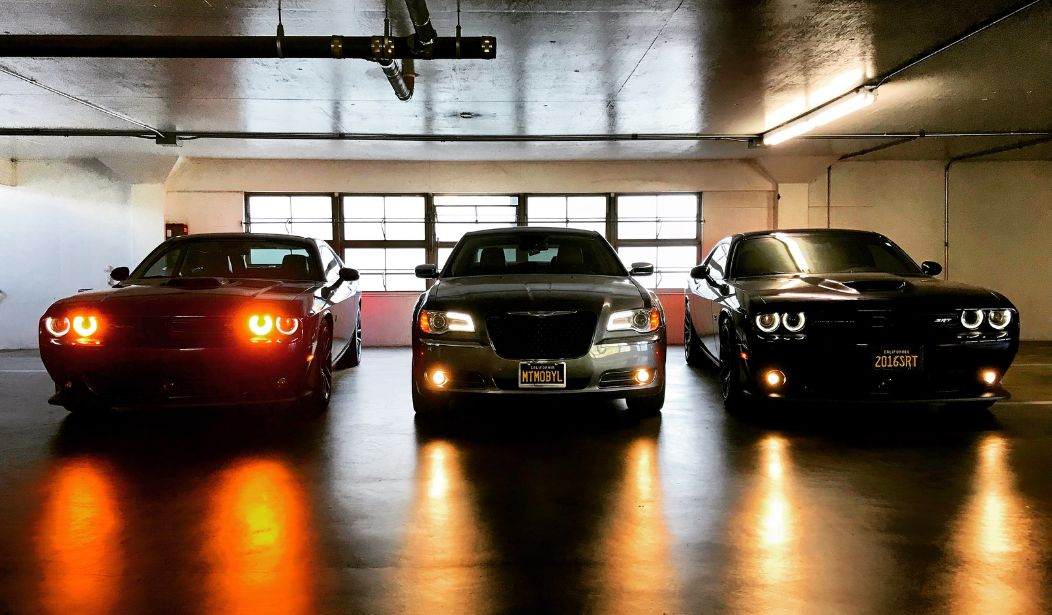Last week, after 19 years in production, the very last of the Chrysler/Dodge LX platform muscle cars rolled off the assembly line in Brampton, Ontario. After almost 4.4 million cars built, the legacy left by the automotive legends built on this platform will be felt for decades and generations to come. For car fans, the reasons to mourn the loss of these legends are obvious, but what their demise signals for working-class empowerment, freedom, and upward mobility, should concern all Americans.
So we’re all clear, the cars I’m talking about here are the mobster-looking Chrysler 300C, the muscle-wagon Dodge Magnum (which was made from 2005 to 2008), the badass Dodge Charger sedan, and perhaps the best modern interpretation of a classic retro car, the iconic Dodge Challenger. It’s not an overstatement to say that these vehicles changed the automotive landscape of this country, creating a whole new movement of diehard enthusiasts, and with it, these cars became part of our culture, our politics, and indeed our lives. When such automotive giants pass on to that big assembly line in the sky, I think it’s important to pour a quart of 5W-20 motor oil out in celebration of what they meant to so many of us. Sadly, they are not the only icons going away over the next year or two due to government regulations. More on that later…
I am admittedly biased in my affection for these cars. I have now owned six of these cars since 2006: five Chrysler 300C’s with the legendary Hemi V8 (a 2006, a 2008, a 2009, a 2011, and a 2015) and one 2016 Dodge Challenger SRT. I’m grateful to still own the 2015 Chrysler 300C Platinum and the 2016 Dodge Challenger SRT, and will proudly drive them as long as I am alive or as long as the government allows us to, whichever comes first. My dad fell in love with my Challenger the moment I took delivery at the dealership, so much so that he decided to order his own 2016 Dodge Challenger R/T Scat Pack 392 a few weeks later, which he still owns to this day. It’s definitely a special experience going to car shows together in our matching Mopars. My older brother even joined the “club” getting a 2016 Dodge Charger AWD Police Pursuit. The Hemi gene clearly runs strong in this family!

Chrysler 300C
Enter the Chrysler 300C, which entered production in 2004 as a 2005 model. Developed with help and parts sharing from Chrysler’s corporate partner at the time, Mercedes, the 300C had a thoroughly modern platform and fully independent suspension, rear-wheel drive, a 340 horsepower V8 engine, and one of the coolest, almost concept-looking designs ever to come out of Detroit. There are a few memorable automotive launches in history. The Mustang is one, the VW Beetle is another, and then there was the home run that was the Chrysler 300.

But what was most important was how it was received by the American car lover, and with them, it was a runaway hit. Chrysler couldn’t build them fast enough, selling more than twice as many as originally planned in their first two years, and it became not just a phenomenon in America, but also in Canada, Europe, Australia, and the Middle East. For the first time in decades, or perhaps ever, a person of middle-class means could afford a car with a similar performance, features, and gravitas that was previously only afforded to those with the means to purchase a BMW or Mercedes. Suddenly, the rest of the Big 3, Europe, Japan, and South Korea were scrambling to offer affordable rear-wheel-drive, V8 options to compete with the success of the 300, and for a window in time, rear-wheel-drive V8 cars became mainstream again! By sales and by heart though, the American “forgotten man” had already found his car, and it was a Chrysler!
These cars had become such a phenomenon that they spurred on several successful iterations on the same platform with available V8s, including the Dodge Magnum station wagon, the Dodge Charger sedan, and the retro-styled Dodge Challenger coupe. What made each of these cars successful is that the styling, interior, and feel of each was very different from the others so they didn’t negatively impact each other’s sales, and that they all unabashedly, proudly, and brashly, showcased chiseled, American muscle. But just as the models multiplied, the political and economic world began to change.
When the economy collapsed in 2008, the political Left came into power and quickly united around the concept that “green energy” was the way out of America’s economic quagmire and would also save the environment. It wasn’t and still isn’t. Remember the Obama Administration poured billions into failed “green” ventures like Soyndra during that era, and now the same thing is happening again under the Biden Administration with solar, and wind power, and subsidies for the unsold electric vehicles that are piling up on dealer lots. As presidential candidate Obama in 2008, he traded in his Chrysler 300 for a sad Ford Escape Hybrid. Car folk the world over yawned at this obvious display of virtue-signaling, and it was becoming clear that the rest of the political Left was now coming for the internal combustion engine, especially anything with a V8.
Hellcat
However -- and I really love this part -- in 2015, Dodge sensed there was still enough rebellion and independence left in the American spirit, that they decided to give a flying middle finger to that sentiment in the form of a loud, 707 horsepower, supercharged, Hellcat Hemi V8. To put those numbers in perspective, the Hellcat made the Charger the most powerful production sedan you could buy, at any price, anywhere in the world, yet it cost just under $60K. It produced numbers and fanfare on par with elite supercars, yet was also attainable for many middle-class and upper-middle-class car aficionados. To get a coupe on par with the Challenger Hellcat, you had to look at top-end Ferraris, Lamborghinis, and other exotics that cost $250K or more. In its final 2023 iteration, the Challenger Hellcat 170 became the world's fastest production car in history, doing a 0-60 in 1.66 seconds and a quarter-mile time of 8.9 seconds.
The Hellcats completely redefined the definition of what “powerful” was, and like the 300 before them, they became the leading automotive and cultural icons of their era. Most importantly, they enabled the forgotten man to be able to own and enjoy cars as special and powerful as their far wealthier neighbors. The sound, the timeless design, and the sales reflected this seachange, with the Dodge Challenger consistently outselling the Ford Mustang in recent years, coinciding with its repositioning as being more of a sports car than a true muscle car like the Challenger. But of course, this automotive love affair did not sit well with the wealthy elite who seem to believe this sort of power and passion should only be reserved for them, while the rest of us are relegated to driving a far more “responsible” Prius or a fully-electric vehicle.
As late as 2020, there were plans for a next generation of Dodge Charger and Challenger, and 300, with internal combustion V8s and rear wheel drive. Clearly, the boys at Dodge were banking on a different election outcome that year, but no one was prepared for just how extreme the fuel economy and “green” mandates of the Biden Administration would be. Once it became clear how aggressive this administration would be, the 2025 and beyond regulations appear to have forced Stellantis, the current owner of Dodge and Chrysler, to scrap those plans and go all in on fully electric and possibly downsized internal combustion/hybrid options for their muscle cars. It's not an overstatement to say the general consensus among current Chrysler/Dodge owners varies from depression to outrage. The cars that we love, these special beasts that made owning that pinup poster fantasy finally attainable, are once again being taken from us, not because of sales or the free market, but because the “government knows best."
Goodbye to V8 Engines?
Perhaps you aren’t a particular fan of these LX cars, and you think their demise is just an outlier. Well, for Chevrolet Camaro fans, the last V8 Camaro also just rolled off the assembly line. The last year for the Ram truck before it loses a V8 option is 2024, and the same for the Dodge Durango, Jeep Grand Cherokee, and Jeep Grand Wagoneer. On the slightly more expensive side, V8s have been removed from the Mercedes C63 and E63, and the Toyota Land Cruiser; 2024 will be the last year for any Jaguar with a V8. Lastly, the phenomenal Cadillac CT5 V-Blackwing, with its supercharged 6.2 liter V8, will be the last performance V8 that Cadillac ever offers, or at least, so they say. My guess is that 2025 will be the last year for these majestic sedans.
Meanwhile, EVs are not selling at all as originally predicted and why wouldn’t they? People do not like being told what to buy, much less being forced into it. Ford and many others have cut their sales projections in half and dealers are having to sell these vehicles at a loss just to move them as it costs much more to make an electric car than an equivalent gas-powered vehicle. As a result, I predict over the coming years that more than a few long-time automakers will go out of business trying to adhere to EV government regulations by spending billions of dollars to transition their platforms and infrastructure to this new technology, only to have the market decide they still prefer some sort of gas-powered option over full-EV. Meanwhile, the “old-school” Dodge Charger, Challenger, and 300 were still selling in near-record numbers right up to the end and were highly profitable for both the dealers and Stellantis. In their absence, sales are already starting to decline at Stellantis, leading to cuts in marketing and other areas, putting its future at risk.
So yes, the loss of these cars is individually significant, but what it reflects on a larger macro level is even far more impactful; the death of American working-class empowerment, their attainable dreams, and their freedom to live their life how THEY see fit. It’s not just our cars this administration and like-minded Progressives have been taking away. It’s our gas stoves, it’s our lawnmowers, and it's our ability to even water our lawns. It’s gas leaf-blowers, and single-family zoning, and on and on. It may start with taking our V8s, but it will almost certainly end in a far darker place unless the dominant political climate changes, pun intended.

Matthew Craffey of Los Angeles has a bachelor’s degree in political science from California Lutheran University and is a board member of Log Cabin Republicans.













Join the conversation as a VIP Member